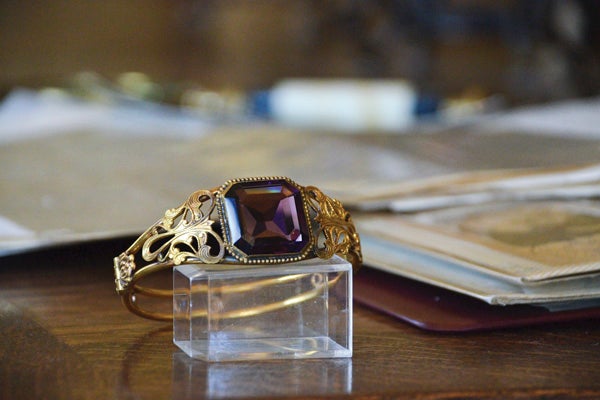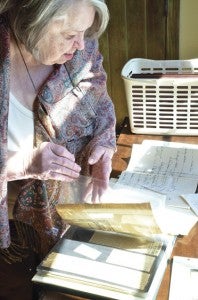
By Stephen Dawkins
Many of us will inherit valuables from parents, grandparents or ancestors so far down the line that only a few memories remain of them.
Far fewer of us will inherit valuables so rare that they end up in a museum.
Such was the case with Mary Kate Weir of Verbena, who inherited items once owned by Martha Washington, wife of the first president of the United States, George Washington.
Weir’s daughter, Rachel Giles of Clanton, remembers growing up with the items, including a demilune table that was in her bedroom as a child.
“I played cards on it,” Rachel said of the demilune table, so named because it is basically a “half table” intended to be situated against a wall. “I’ve grown up with antiques; antiques are my passion. We used [the table]. We didn’t say, ‘Here’s a silk rope around this.’”

The table was one of several items passed down the line from Martha Washington to Mary Kate Weir that now can be found at the Karl C. Harrison Museum of George Washington in Columbiana. Others include two lithographs depicting Washington, a punch bowl and set of glasses.
The history of the bowl, known as the Dandridge Bowl, dates to 1786, when it was accepted as part of a payment for debt owed by Bartholomew Dandridge to the Herbert & Co. import trading house, then located at the corner of Queen Street and Fairfax in Alexandria, Va. Herbert & Co. contracted with the Custis estate, which included Martha’s first husband, Daniel Parke Custis. Custis passed away, and Martha married George Washington, who would remain in business with Herbert & Co.
After the deaths of Martha’s son, Jackie, and Bartholomew Dandridge, George Washington was named executor of the two wills—and left to determine how much debt Jackie, a lavish spender, had accumulated with Herbert & Co. As part of the process, Washington set a value for everything owned not only at Herbert & Co. but at several private residences.
“They had told him the correct number to begin with, and he didn’t believe them,” Weir said.
The families felt insulted, and the hard feelings did not cease, causing turnover at the company. The punch bowl was part of the Dandridge settlement.
The bowl, a famille rose Chinese export bowl, is adorned with butterflies and bees among colorful berry vines and flowers on a white background. The bowl is about 14 inches in diameter and 5.5 inches in height.
Along with the bowl were a set of “flip” glasses, used for consuming an alcoholic drink popular at the time.
“It was customary at the time to offer a fruited drink to all visitors, and to commemorate deals,” Weir said.
Weir, who descended from Martha Washington through the Dandridge line, was beginning to think she needed to do something with the Washington estate other than have the items sitting around her and her husband’s home, and about the same time, Karl and Mildred Harrison were opening a museum dedicated to George Washington at the library in Columbiana, so several items were transferred to the museum.
“I want my children and grandchildren to be able to go in there and see these things,” Weir said.
Weir said she wants more people to know about the museum, which she calls a “treasure” and a “magnificent collection” that includes numerous items that came from other sources.
Curator Don Relyea said because admission is free, the museum has trouble generating funds.
“Most people just walk by the donation box,” he said.
However, the museum’s profile may benefit from being included on a tour list for the Alabama Historical Association in October.
Not everything passed down to Weir from the Martha Washington estate has been transferred to the museum. The family still has a vase, a Horner buffet table, a silver teapot, various smaller items and perhaps the most interesting piece: a gold and amethyst bracelet assumed to have been worn by Washington herself.
While comparable to 14-karat gold, the “Dandridge Bracelet” is closer to 16 karats, said Giles, a gemologist. With the more rudimentary processes used in the 18th Century, the same precision couldn’t be achieved as can today.
One of the lithographs that hangs in the museum shows Washington wearing a similar bracelet, but instead of an amethyst, the bracelet in the lithograph has a topaz.
The bracelet has always held a special place with the family that holds it.
“We played cards on the table, but [the bracelet] has always been off limits,” Giles said—even for an event as important as Giles’ senior prom.
“She wore a purple dress, and she wanted to wear it because it matched,” Weir said. “She wasn’t going to go to her prom in that.”
